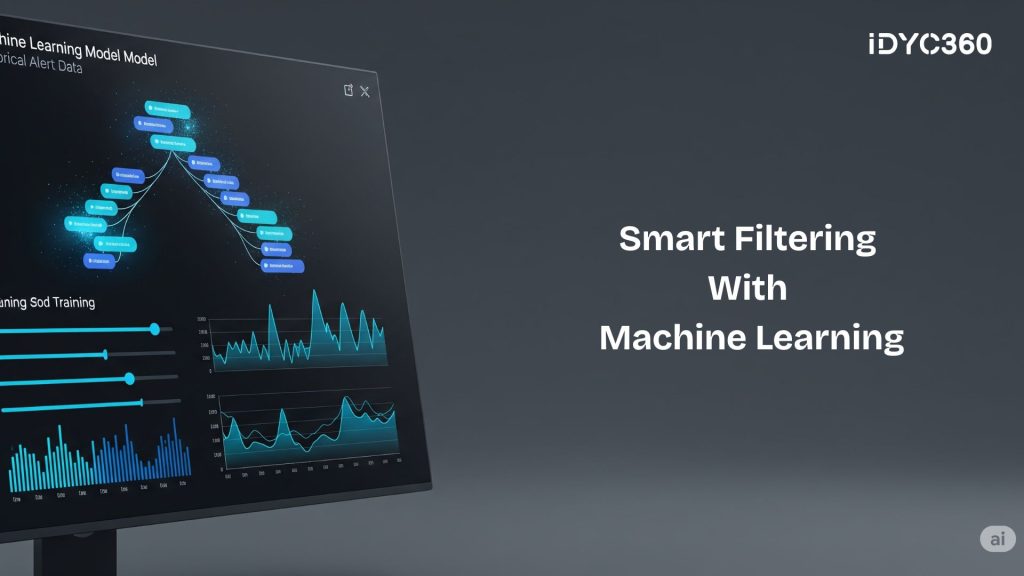Sanctions and watchlist screening are essential components of any AML compliance program.
Yet traditional rule-based systems generate overwhelming volumes of false positives, up to 95% of alerts in 2025, consuming more than 40% of analysts’ time.
Machine learning–powered filtering transforms this process by learning from historical data to distinguish true risks from noise, reducing irrelevant alerts by up to 70% and halving review times.
This enables compliance teams to focus on high-risk cases and accelerate customer onboarding without sacrificing control.
Traditional Watchlist Screening: Operational Challenges

Rule-based screening relies on exact or fuzzy matches against static lists of sanctioned entities, PEPs, and adverse media. While necessary, this approach creates significant drag:
- High False Positive Rates: Analysts spend hours manually clearing benign hits caused by name variations and misspellings.
- Static Rule Sets: Inflexible thresholds fail to adapt to new naming patterns or emerging risks, leading to alert fatigue.
- Fragmented Workflows: Separate tools for sanctions, PEPs, and adverse-media screening produce data silos and duplicate reviews.
- Resource Drain: Manual review of low-value alerts diverts experts from complex investigations, delaying critical actions.
Machine Learning Techniques for Watchlist Filtering

Machine learning enhances screening by applying statistical models trained on past alerts and confirmed outcomes:
- Supervised Learning Models: Algorithms such as gradient boosting learn to score name-list matches based on features like edit distance and contextual metadata, with continuous retraining on analyst feedback.
- Entity Resolution & Clustering: Groups’ aliases, transliterations, and variations under single profiles, reducing duplicate alerts and surfacing true matches.
- Natural Language Processing (NLP): Processes free-text excerpts from adverse media to identify relevant context and standardize names and locations for more accurate matching.
- Anomaly Detection: Spots unusual screening patterns, such as spikes in low-confidence matches, and prompts teams to retrain models or update data sources.
- Risk-Based Thresholding: Dynamically adjusts match sensitivity based on customer risk scores, transaction context, and geography to balance control and customer experience.
Operational Benefits & Efficiency Gains

Adopting machine learning in watchlist filtering delivers measurable improvements:
- False Positive Reduction: Up to 70% fewer irrelevant alerts, freeing analysts to address genuine risks.
- Faster Review Cycles: Automated triage and prioritization cut average review time by 50%.
- Scalable Screening: Real-time processing of millions of records supports rapid onboarding and high-volume transaction spikes.
- Cost Savings: Lower operational overhead as fewer human hours are spent on low-value tasks.
- Improved Customer Experience: Instant, low-friction screening for low-risk customers reduces abandonment rates and boosts satisfaction.
Best Practices for Implementing ML-Driven Filtering

To maximize benefits and manage risk, compliance teams should adopt these practices:
- Collect & Label Quality Data: Build robust training datasets using historical alert outcomes, SAR dispositions, and investigation notes.
- Establish Feedback Loops: Integrate analyst decisions, true hits, and false positives into retraining workflows, with scheduled retraining to adapt to new watchlist entries.
- Hybrid Human-Machine Approach: Use ML to pre-filter and prioritize alerts, reserving human review for high-risk or borderline cases, with clear escalation criteria.
- Monitor & Validate Model Performance: Track precision, recall, and review times to ensure sustained improvements and detect model drift.
- Integrate Across Compliance Functions: Unify sanctions, PEP, adverse media, and transaction monitoring alerts in a single platform to avoid redundant reviews.
How IDYC360 Helps

IDYC360’s AI-powered watchlist filtering module integrates seamlessly into its unified
AML/CFT platform:
- Adaptive ML Scoring: Continuously refines match scoring using supervised learning on your institution’s historical dispositions.
- Entity Resolution Engine: Consolidates aliases and variations into single profiles, streamlining alerts and reducing duplicates.
- Real-Time Contextual Filtering: Applies NLP to filter irrelevant adverse-media mentions while highlighting genuine risks.
- Dynamic Threshold Management: Automatically adjusts screening sensitivity based on customer risk tier, transaction type, and geography.
- Unified Alert Console: Consolidates notifications from sanctions, PEP, and watchlist modules, empowering analysts to clear low-value hits in bulk.
- Performance Analytics: Built-in dashboards track false positive rates, review times, and model health, ensuring continuous optimization.
Final Thoughts

Machine learning, enhanced watchlist filtering is no longer optional but a necessity for compliance teams seeking to reduce operational drag while maintaining robust controls.
By combining adaptive algorithms with human expertise and continuous model refinement, institutions can transform screening from a resource drain into a streamlined, risk-focused process, positioning themselves to meet 2025’s demanding AML landscape.
Ready to Stay
Compliant—Without Slowing Down?
Move at crypto speed without losing sight of your regulatory obligations.
With IDYC360, you can scale securely, onboard instantly, and monitor risk in real time—without the friction.








